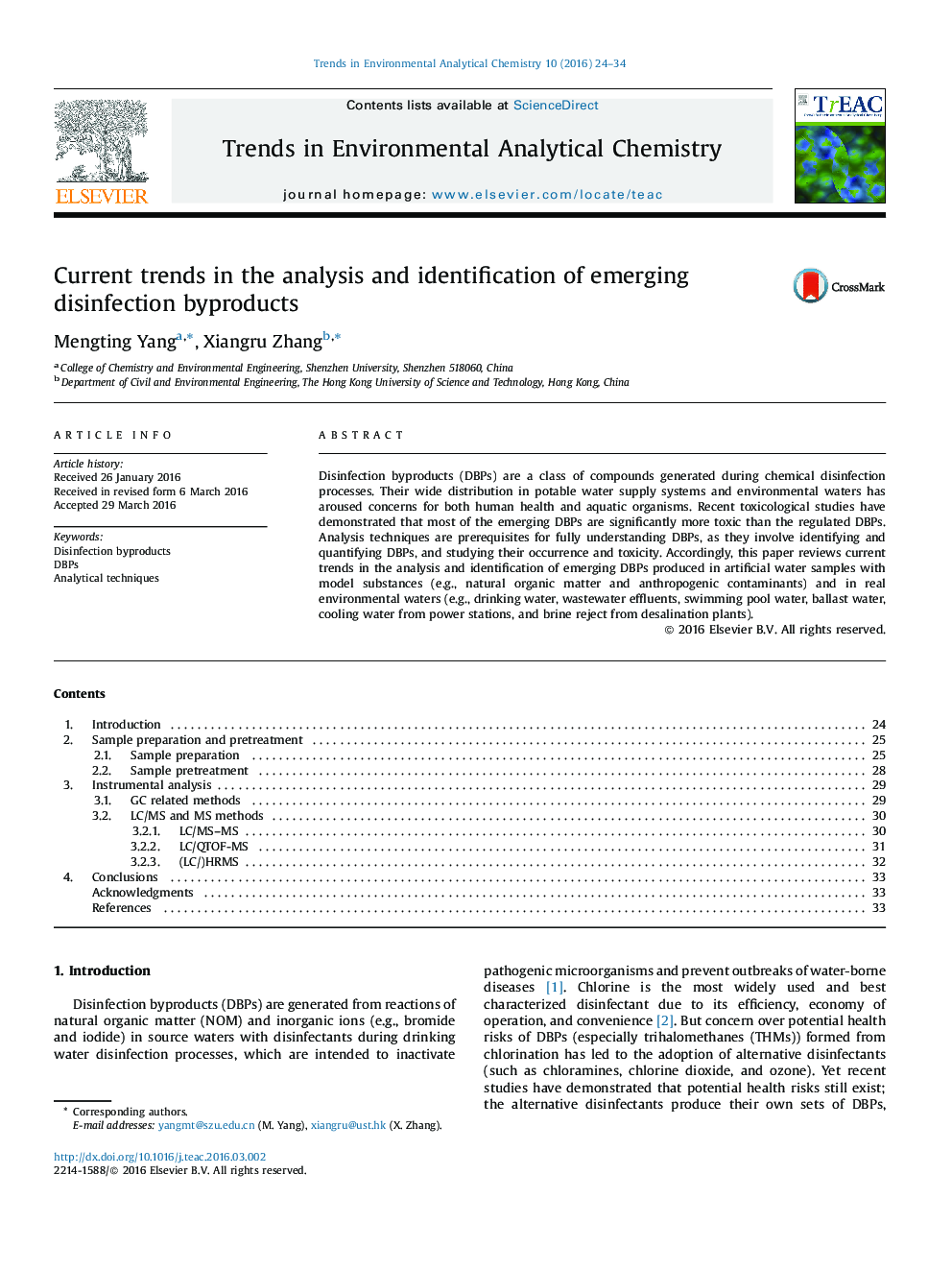| کد مقاله | کد نشریه | سال انتشار | مقاله انگلیسی | نسخه تمام متن |
|---|---|---|---|---|
| 1249769 | 1495951 | 2016 | 11 صفحه PDF | دانلود رایگان |
• Literature regarding analysis of emerging DBPs is critically reviewed.
• Sample pretreatment methods are outlined and compared.
• Recent MS related methods for analyzing emerging DBPs are summarized and discussed.
Disinfection byproducts (DBPs) are a class of compounds generated during chemical disinfection processes. Their wide distribution in potable water supply systems and environmental waters has aroused concerns for both human health and aquatic organisms. Recent toxicological studies have demonstrated that most of the emerging DBPs are significantly more toxic than the regulated DBPs. Analysis techniques are prerequisites for fully understanding DBPs, as they involve identifying and quantifying DBPs, and studying their occurrence and toxicity. Accordingly, this paper reviews current trends in the analysis and identification of emerging DBPs produced in artificial water samples with model substances (e.g., natural organic matter and anthropogenic contaminants) and in real environmental waters (e.g., drinking water, wastewater effluents, swimming pool water, ballast water, cooling water from power stations, and brine reject from desalination plants).
Journal: Trends in Environmental Analytical Chemistry - Volume 10, April 2016, Pages 24–34
